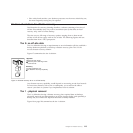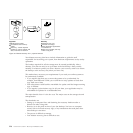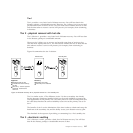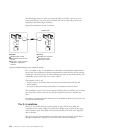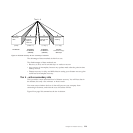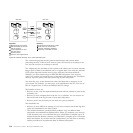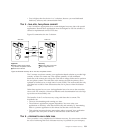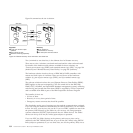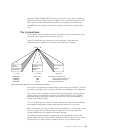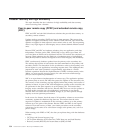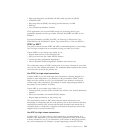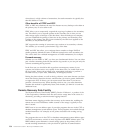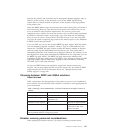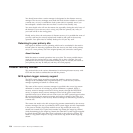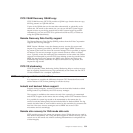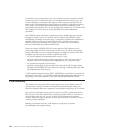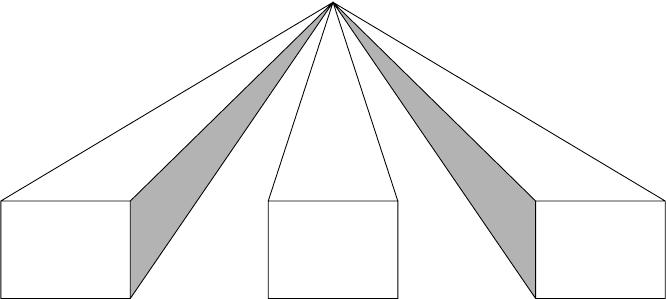
support the XRC DFSMS/MVS host, and one for the recovery 3990, this allows a
total of 86 km (53.4 miles) between the 3990s. If you use channel extenders with
XRC, there is no limit on the distance between your primary and remote site.
For RRDF there is no limit to the distance between the primary and secondary
sites.
Tier 4–6 solutions
This summary shows the three tiers and the various tools for each that can help
you reach your required level of disaster recovery.
Figure 25 summarizes the solutions for tiers 4 through 6, and shows the
approximate time required for a recovery with each tier of solution.
Tier 4 relies on automation to send backups to the remote site. NetView
®
provides
the ability to schedule work in order to maintain recoverability at the remote site.
Tier 5 relies on the two-phase commit processing supported by various database
products and your application program's use of these features. Tier 5 requires
additional backup processing to ensure that vital data, other than databases, is
copied to the remote system.
Tier 6 is divided into two sections: software solutions for specific access methods
and database management systems, and hardware solutions for any data.
RRDF can provide very high currency and recoverability for a wide range of data.
However, it does not cover all the data in which you may be interested. For
example, RRDF does not support load module libraries.
The 3990-6 hardware solution is independent of the data being stored on the
DASD. PPRC and XRC can be used for databases, CICS files, logs, and any other
data sets that you need to ensure complete recovery on the remote system.
Active
secondary
site. Host-Host
file transfer
2 site/2 phase
commit
Application
based
Zero data loss
ESCON
456
Tier 4 - 6
(< 1 day) (< 1 hour) (Instantly)
DFSMSdss
DFSMShsm
(ABARS)
NETVIEW
IMS / XRF
CICS
DB/2
Other
3990 model 6 remote copy
- Peer-to-peer remote copy
- Extended remote copy
Host data compression
Figure 25. Disaster Recovery Tier 4-6: Summary of Solutions
Chapter 19. Disaster recovery 233



